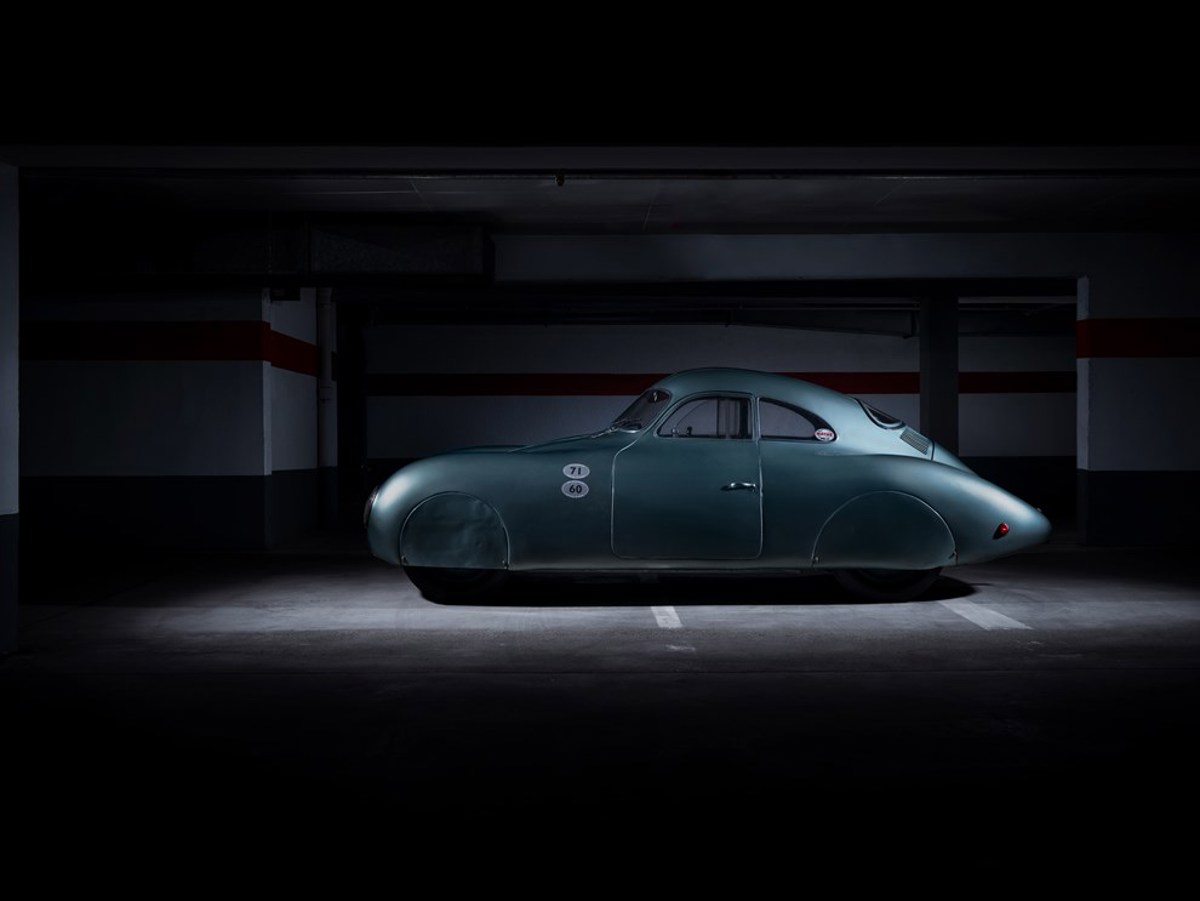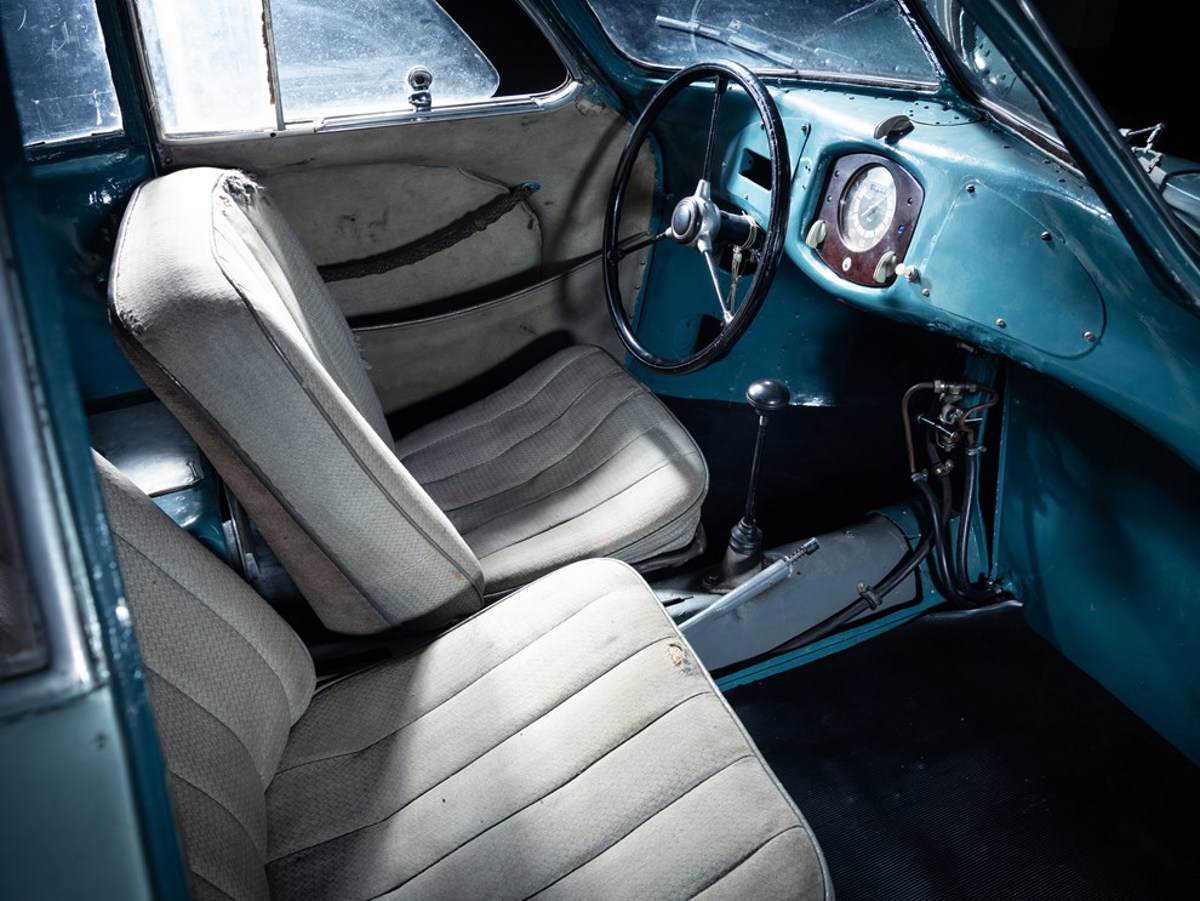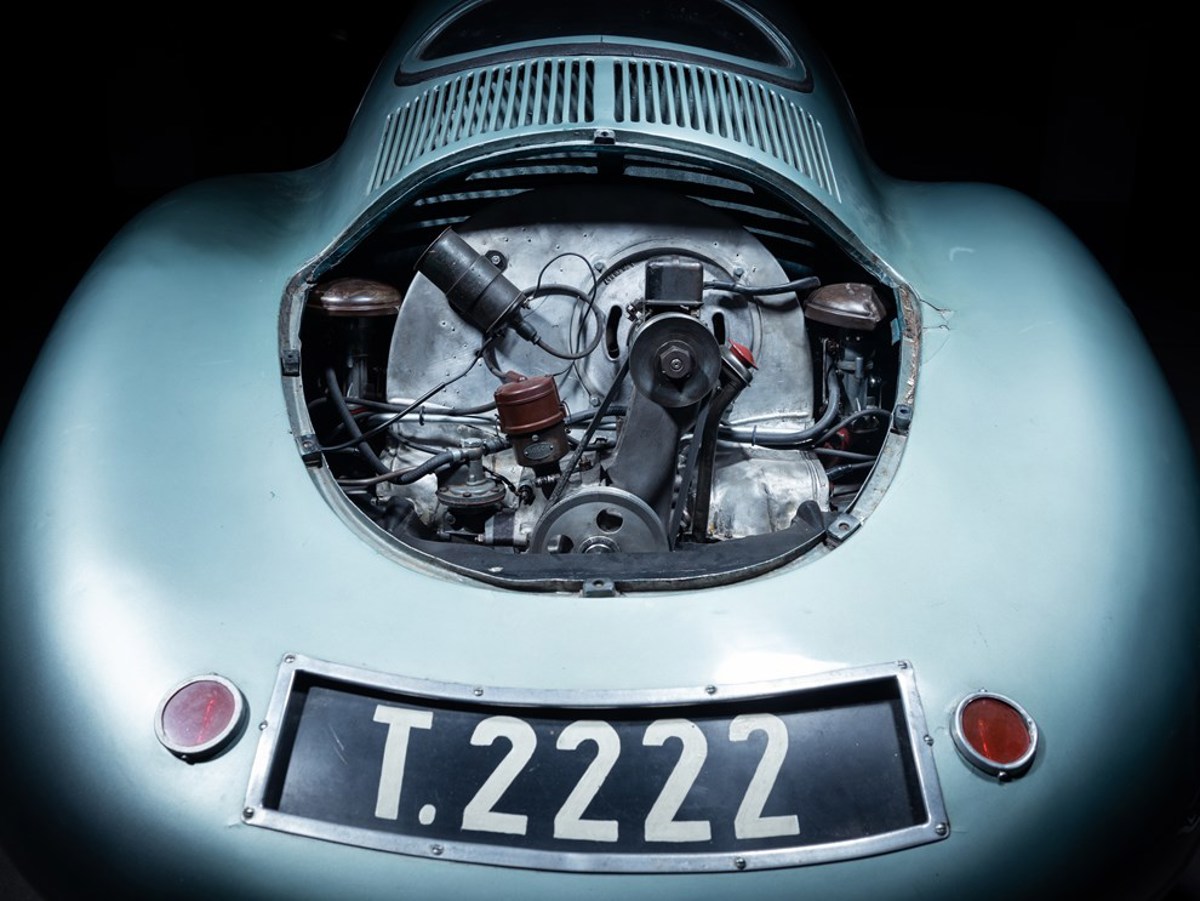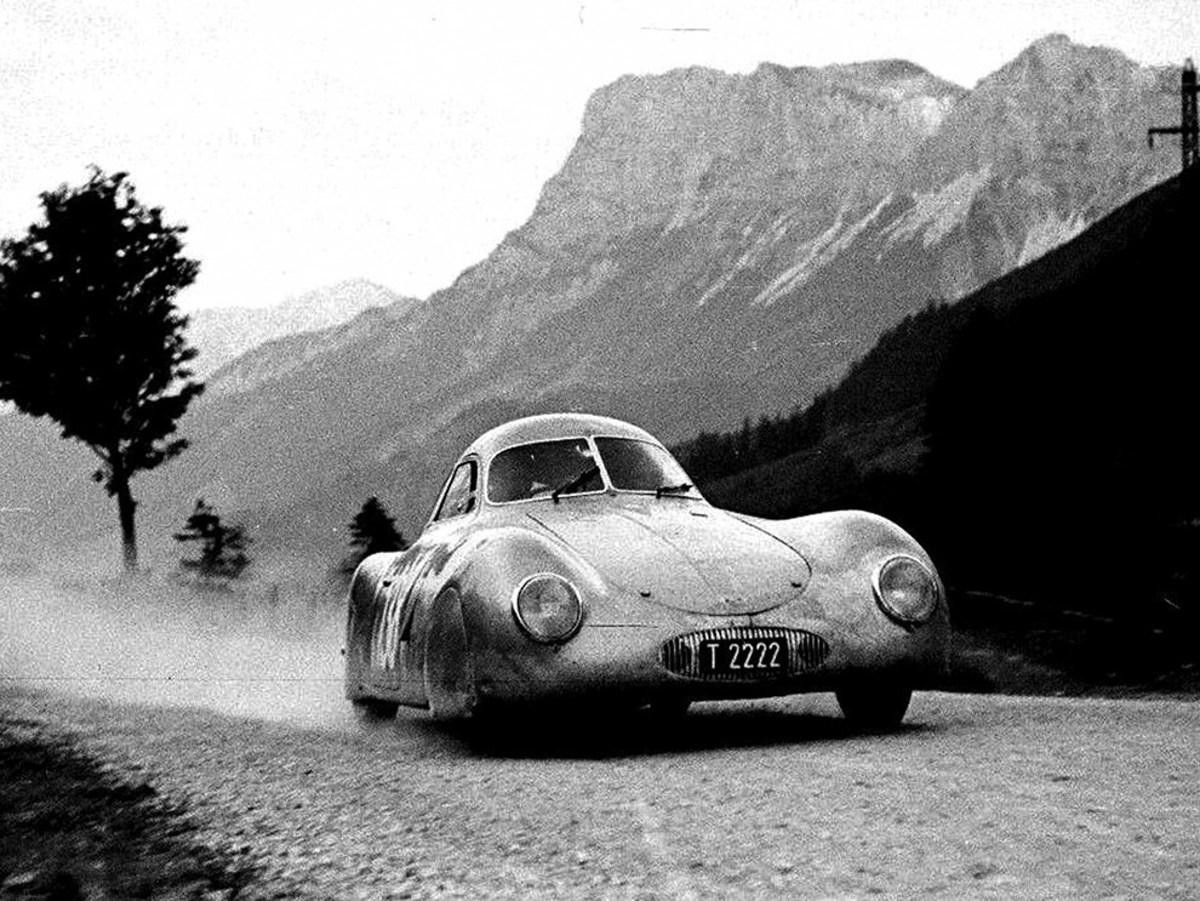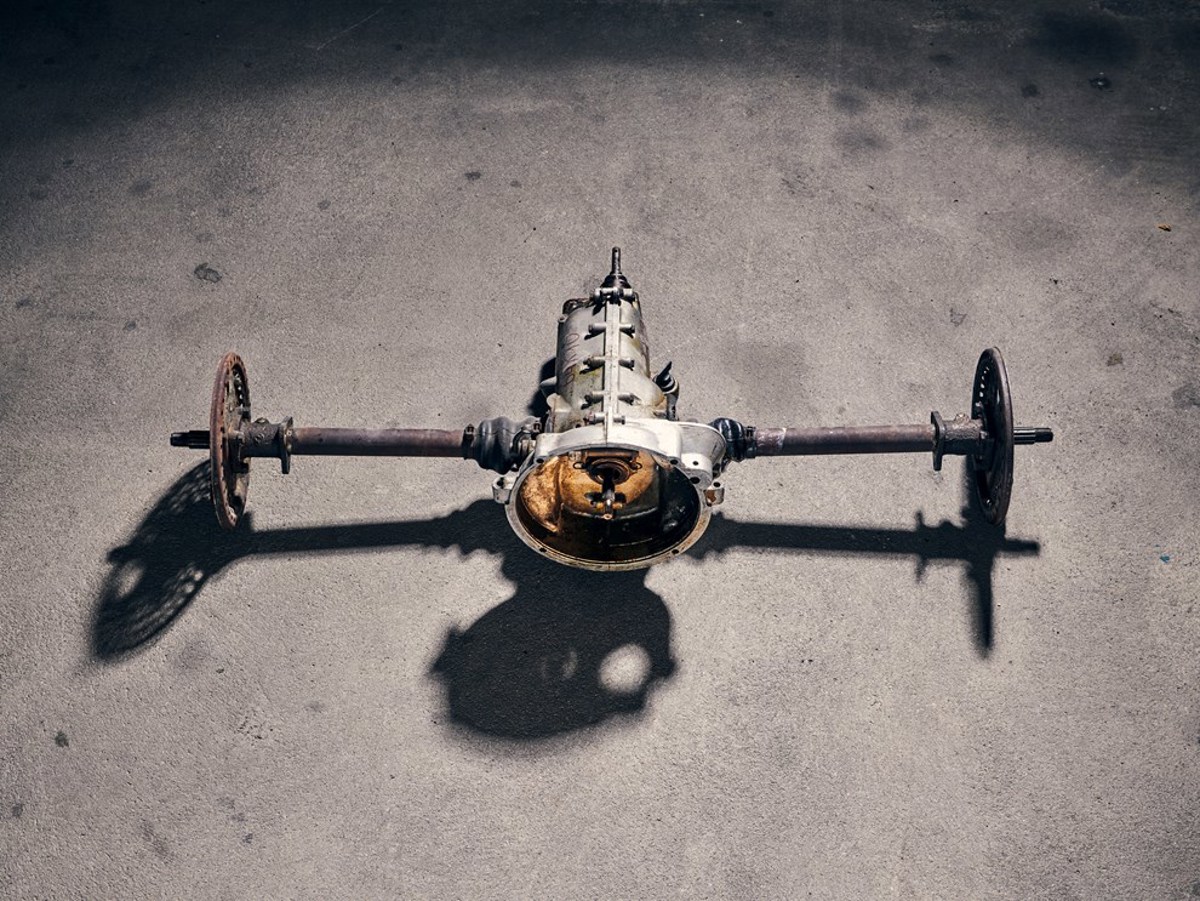The rush of technological advancement in automobiles through the 1920s and 1930s resulted in some of the most iconic race cars of the period. Road racing brought tremendous prestige for carmakers and drivers alike and was a source of national pride during the interwar period. VW commissioned Dr. Ferdinand Porsche to produce three special long-distance race cars to compete in the Berlin-Paris road race. Presumably the cars might have been lined up next to Auto Unions and Mercedes-Benz entries had the race actually transpired. This may have been VW’s attempt to show its mettle.
While the road race never came to fruition due to the advent of the Second World War, the Type 64 laid the engineering foundation of the most compelling Porsche sports cars, which carry principals to present-day models. It is a vehicle that is regarded as the missing link between Volkswagen and Porsche and is quite possibly the most significant example of Porsche engineering in existence today.
RM Sotheby’s is proud to offer the Type 64 owned and driven by Dr. Ferdinand Porsche and his son Ferry Porsche at our upcoming Monterey flagship three-day collector car auction, held August 15-17.
Scroll down to explore the details of the incredible 1939 Porsche Type 64.
1939 Porsche Type 64
Aircraft-Technology-Derived Bodywork
Lightweight riveted aluminum body panels were formed from 0.5 mm aluminum sheets by the coachbuilders at Reutter Works to create its unique aerodynamic body with sweeping fenders, removable alloy fender skirts, and narrow teardrop-shaped passenger and engine compartment to reduce drag.
Endurance-Racing-Focused Design
The trunk was designed to hold two spare tires beneath the streamlined bodywork, a VW request intended to address the poor quality of the KdF standard tires. This meant that the gas tank had to be moved farther back toward the vehicle interior in order to avoid sacrificing capacity. The fuel tank protruded into the passenger footwell, which necessitated the passenger seat being mounted 30 cm back and closer to the center of the vehicle in a staggered configuration.
Weight Reduction to Optimize Power
The structural chassis elements of the Type 1 Volkswagen were retained, although the floor pans were replaced with lightweight aluminum panels to further save weight in addition to the lightweight outer structure. The valve covers, oil filler, and cooling shroud were also made from a lightweight alloy instead of steel. The interior featured minimalist-design seating for only the driver and passenger, an aluminum dashboard with speedometer, and crude fabric door panels with door handles fashioned from rope.
Race-Tuned Air-Cooled Engine
The Type 64 shares the same flat-four-cylinder air-cooled engine from the Type 1 Volkswagen, but was tuned to 32 horsepower through the use of larger valves, dual carburetors, and a higher compression ratio in preparation for the 1,500-kilometer Berlin-Rome endurance race. With horsepower increased by a third of the original engine, optimized aerodynamics, and decreased weight, the standard KdF-Wagen 1:4.47 axle ratio proved to be unsuitable and was replaced with a 1:3.45 unit, which increased the top speed from 134 km/h to 173.5 km/h.
Outstanding Provenance
Chassis number 38/41 was completed in August of 1939 and driven by the Managing Director of Volkswagen, Bodo Lafferentz, who returned it to Ferdinand Porsche after damaging it in an accident in 1940. Dr. Porsche and his son, Ferry Porsche, moved the body from the third Type 64 to the damaged 38/41 and retained it for their personal use until 1949, when Swiss racer Otto Mathé took ownership until his death in 1995. Porsche historian and revered author of the Carrera RS and Porsche 911 R books Dr. Thomas Gruber took ownership shortly after in 1997.
The First Vehicle to Bear the Porsche Name
When the plant was forced to relocate to Gmünd, Austria, to escape the Allied forces’ bombing of industrial facilities, the Type 64 cars went with it. Chassis 38/42 was confiscated by American forces, although Dr. Porsche was allowed to keep 38/41 as his personal vehicle. Ferry Porsche applied the raised lettering on the nose of the car spelling “PORSCHE” when he registered the vehicle for road use in Austria in 1946 under the new company name.
Early Restoration by Pinin Farina
In 1947 Porsche commissioned a young Battista “Pinin” Farina to supervise and complete restoration work on chassis 38/41 in Turin, Italy. Following Pinin Farina’s restoration, chassis 38/41 was demonstrated on public roads in Innsbruck alongside the newest Porsche model, the Type 356 Roadster no. 1.
The First Porsche Entered in Competition
Swiss privateer racer Otto Mathé was exposed to the Type 64 at a demo event for the 356 Roadster and subsequently became enamored with the vehicle. Porsche sold chassis 38/41 to Mathé in 1949, who successfully campaigned the Type 64 in a number of European races through the 1950s and kept the vehicle in his possession until his death in 1995.
Impressive Originality
Chassis 38/41 is presented today in original condition and retains nearly all its original parts. Porsche expert Andy Prill recently studied the Type 64, commenting, “I’ve seen countless special Porsches in my career, but nothing like this. I was very careful in examining the authenticity of the Type 64, no. 3 and its chassis. After spending many days with the car, I have found evidence that all key components of the cars are original as built in 1939/1940. This is the most historically significant of all Porsche cars, and it is simply incredible to find the very first Porsche in this original condition.”
Original Spare Components
Along with the striking originality of the Type 64, a number of original spare parts accompany the exceedingly rare vehicle. An extensive catalog of period images and historical documentation is also included.


